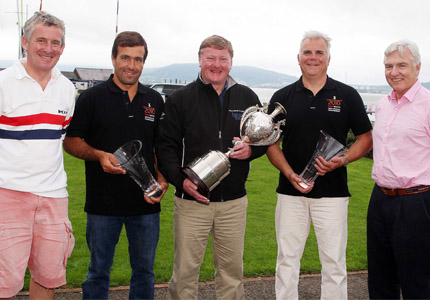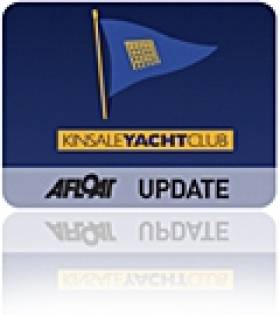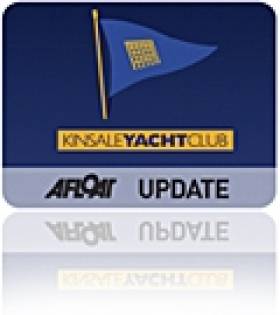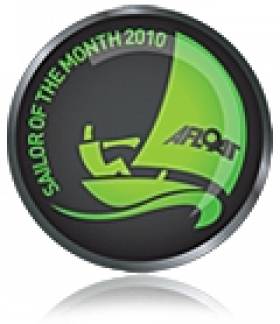Displaying items by tag: Martin Byrne
Craig Takes the Lead in Kinsale
Results following today's two races:
1. IRL211 Little Fella Cameron Good KYC
2. IRL192 Chimaera Andrew Craig RStGYC
3. IRL210 Diva James Matthews KYC
1. IRL192 Chimaera Andrew Craig RStGYC
2. IRL176 Phantom Neil Hegarty RStGYC
3. IRL210 Diva James Matthews KYC
Byrne Takes the Lead in Kinsale
Dragons Prepare for South Coasts in Kinsale
Kinsale Yacht Club hosts the Irish Dragon South Coast Championships from 10 - 12 September 2010.
A very competitive fleet of 18 Dragons will assemble in Kinsale this weekend for the final Championship of the Irish calendar with both the South Coast title and
valuable ranking points for both the World and European Championship qualification on offer.
Though this is a helmsman's championship the importance of an established and cohesive crew on a Dragon is crucial when determining favorites. Neil Hegarty, Peter Bowring and David Willams (Phantom) have excelled on the waters under the Old Head in recent years taking two consecutive National Championships in 2007 and 2009. However, they have always been pushed hard by Martin Byrne (Jaguar) who won the last edition of the South Coast Championships held in Kinsale in 2008 with his son Conor and constant collaborator Pedro De Andrade. Along with several other stellar teams from both the Royal St George and the Royal Irish, including current National Champion Don O'Donoghue (Seabird), is perennial favorite Simon Brien (Kin) from the Royal North of Ireland.
Kinsale Yacht Club has been selected to host the Dragon Gold Cup 2012 and the Kinsale Dragon fleet will be hoping to end the Dun Laoghaire domination of
recent years.
Olaf Sorensen, Martin Payne and Shawn Kingston (Christianna) will lead the challenge with Cameron Good, Henry Kingston and Simon Furney (Little Fella) another long-established team pushing hard for a breakthrough this year. Class Captain Anthony O'Neill with Donal Small and his son Eoghan (Tenacious) have sailed consistently well this season however; Tim Cronin, Caroline Matthews and Harry Lewis (Jee) have found a rich vein of form following a prolonged lay-off and could prove the surprise package.
The courses will be Windward-Leeward and six races will be sailed, with two races each day back to back. Friday promises very interesting conditions with fresh to strong southwesterly winds though the breeze set to moderate throughout the weekend. Principal Race Officer Alan Crosbie and his team will commence proceedings on Friday morning with another scintillating Dragon regatta in prospect.
- Martin Byrne
- Kinsale Yacht Club
- Irish Dragon South Coast Championships
- Neil Hegarty,
- Peter Bowring
- David Willams
- Pedro De Andrade
- Don O'Donoghue
- Simon Brien
- Olaf Sorensen
- Martin Payne
- Shawn Kingston
- Tim Cronin
- Caroline Matthews
- Harry Lewis
- Alan Crosbie
- Henry Kingston
- Cameron Good
- Simon Furney
- Dragon Gold Cup 2012
Dragon Sailor Martin Byrne is July's Sailor of the Month
Martin Byrne of Dun Laoghaire is the Afloat.ie/Irish Independent "Sailor of the Month" for July with his convincing victory in the Irish Dragon Championship on Belfast Lough, a four-day event of first class racing which concluded on Sunday July 25th at Cultra.
Like so many sailing happenings which are proving successful in these stringent times, there was a distinct blast of the past about the Open Nationals 2010. The Royal North of Ireland YC at Cultra was once the leading club in the country for Dragon racing. But the creation of marinas serving Belfast Lough at Carrickfergus and Bangor meant that the pleasant waterfront club in a leafy suburb of Holywood seemed to be left behind in sailing development.
Yet the sailing waters are still there, and the people are still there too. It was local resident Simon Brien, a leading Dragon racer in Ireland and abroad, who led the movement to bring the class back to Cultra. As he has been Irish champion more than once in his 16 years in the class, Dragon sailors at home and overseas took notice. With Belfast Harbour Commission as lead sponsors, the visiting boats were craned into Belfast Docks, and the fleet of 18 top Dragons made a race of it over the four miles to Cultra where they lay out on moorings, just like the good old days.

Martin Byrne, centre with trophy at the Dragon Nationals prizegiving
Crewed by longtime shipmate Adam Winklemann, and Portuguese sailmaker Pedro Andrade, Martin Byrne sailing Jaguar put his stamp on the racing from the start. In fact, the Dublin Bay boats were making hay, as Don O'Donoghue (also of Glandore) finished second overall, with Andrew Craig third. The level of racing is indicated by Klaus Diederichs, crewed by the formidable lineup of Andy Beadsworth and Jamie Lea, being back in fourth, while Simon Brien himself was in fifth, though he and his team of David Gomes and David Good took the prize for top totally amateur crew.
It was good to see the Dragons back in force where they mean a lot to sailing heritage. And it was in an area getting used to sporting success – Rory McIlroy's place is just up the road. But for now in sailing, Martin Byrne is ahead of the pack.
Dubliners Lead Belfast Lough Dragon Champs
Race 4 is currently underway.




























































